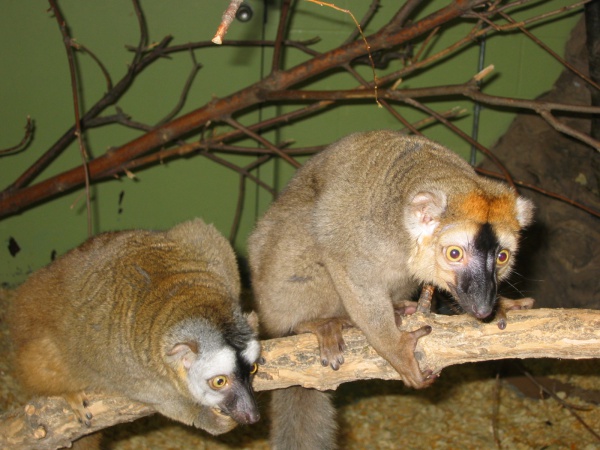Facts About Red lemur
The red lemur, often referred to as the rufous brown lemur or northern red-fronted lemur, is a captivating species endemic to Madagascar. Initially classified as a subspecies of the common brown lemur, it was reclassified as its own species in 2001. Then, in 2008, it was further divided into two distinct species based on genetic and physical distinctions: the red lemur (Eulemur rufus) and the red-fronted lemur (Eulemur rufifrons).
The red lemur, E. rufus, primarily inhabits the dry lowland forests of northwestern Madagascar, while the red-fronted lemur, E. rufifrons, can be found in both the southwestern and eastern regions of the island. These lemurs favor the dry deciduous forests of southwestern Madagascar. They are easily identifiable by their gray coats, black faces, muzzles, and foreheads, accentuated by distinctive white eyebrow patches. Male red lemurs possess white or cream-colored cheeks and beards, whereas females have rufous or cream-colored cheeks and beards.
With a body length ranging from 35 to 48 centimeters and a tail measuring 45 to 55 centimeters, red lemurs typically weigh between 2.2 and 2.3 kilograms.
Regrettably, the red lemur is listed as Vulnerable by the IUCN. These lemurs face substantial threats from hunting and habitat destruction. Activities such as slash-and-burn agriculture, land clearing for pasture, fuelwood gathering, and logging significantly contribute to their shrinking habitat. The current levels of hunting are unsustainable and pose a serious risk to the survival of this exceptional species.
